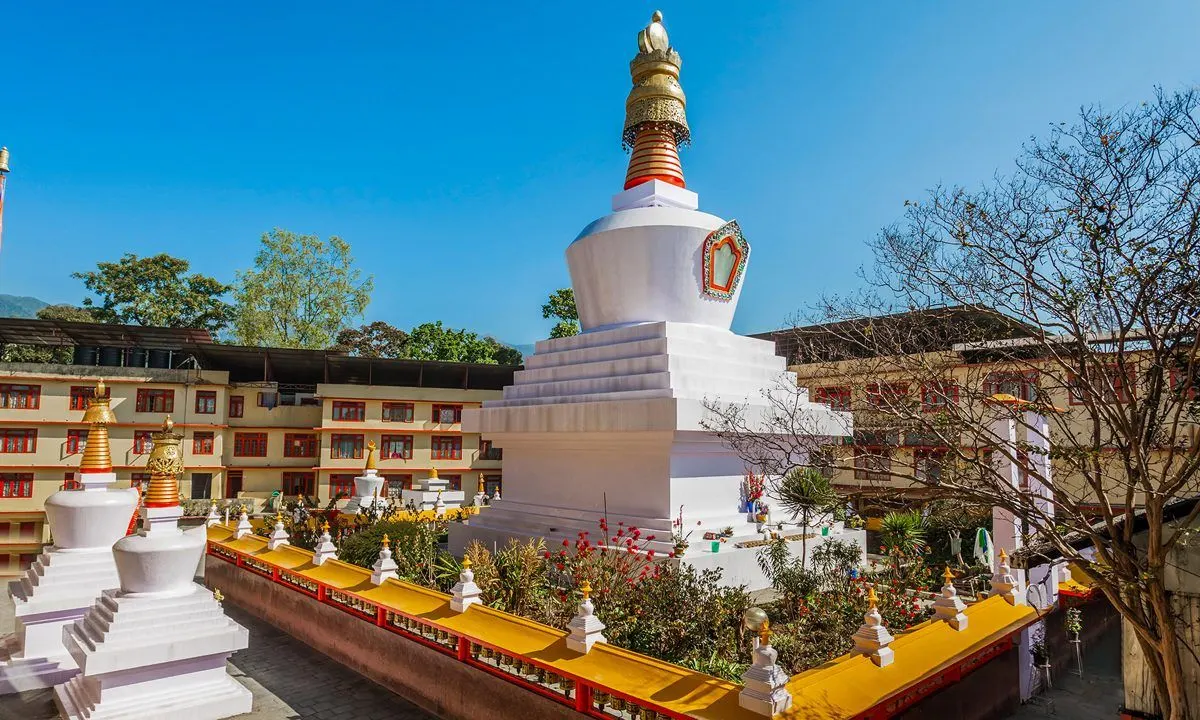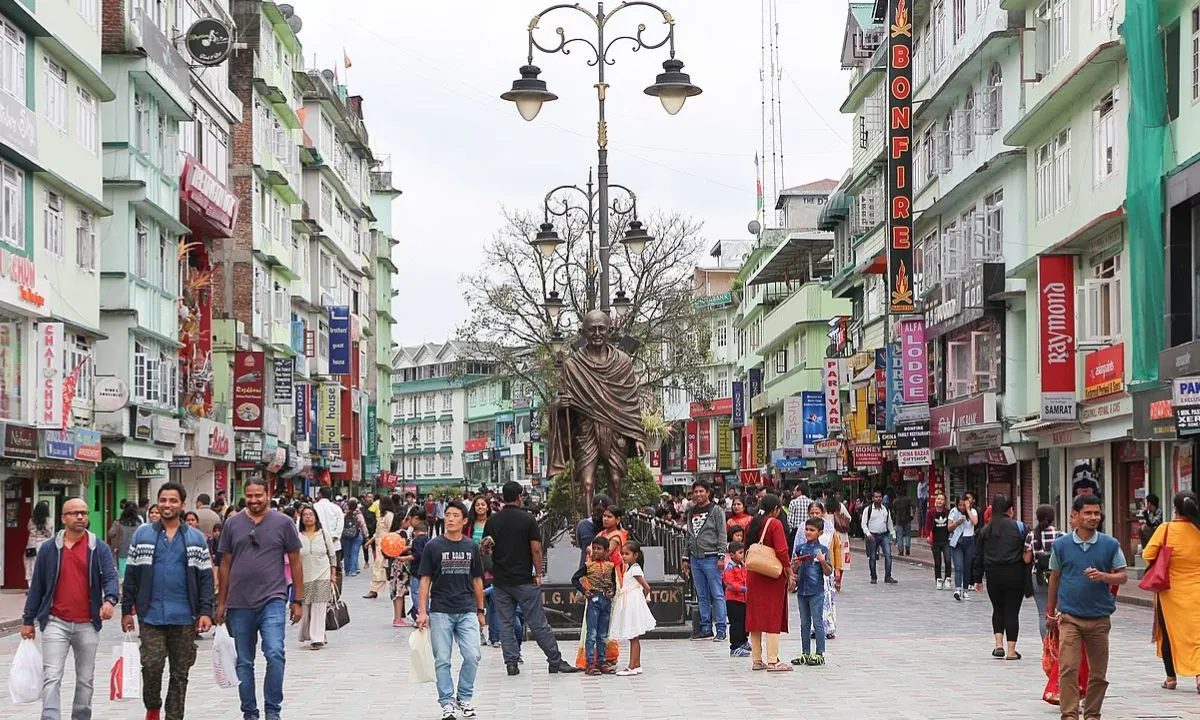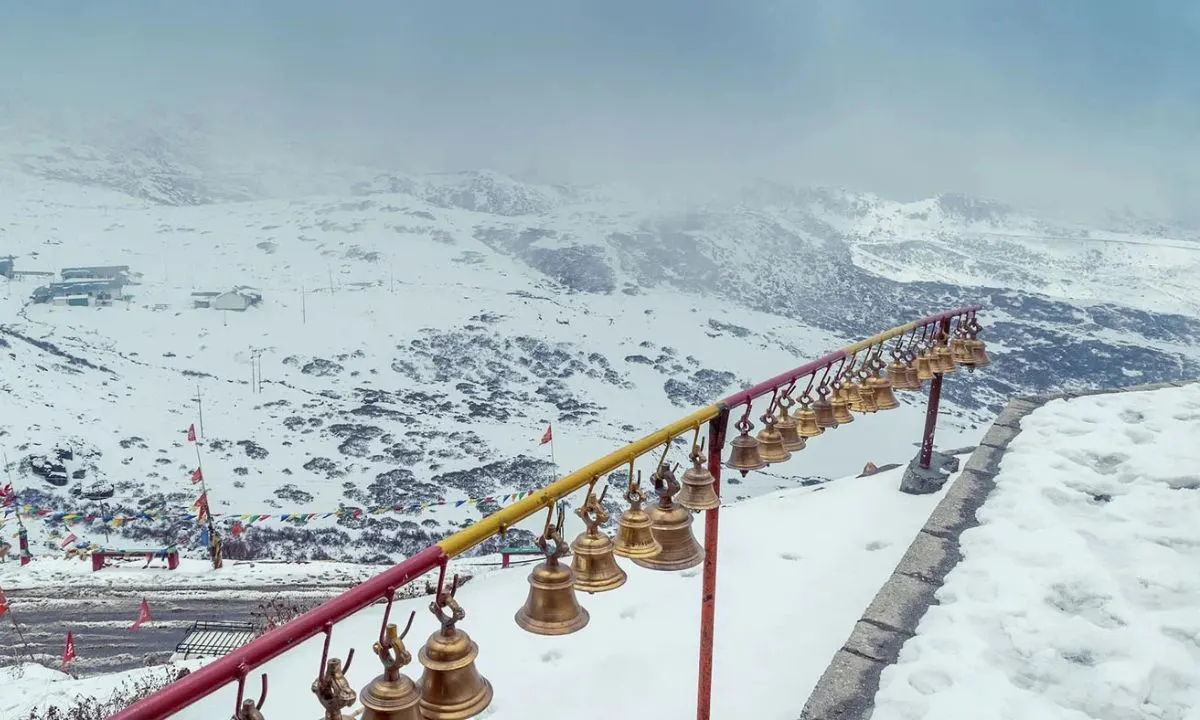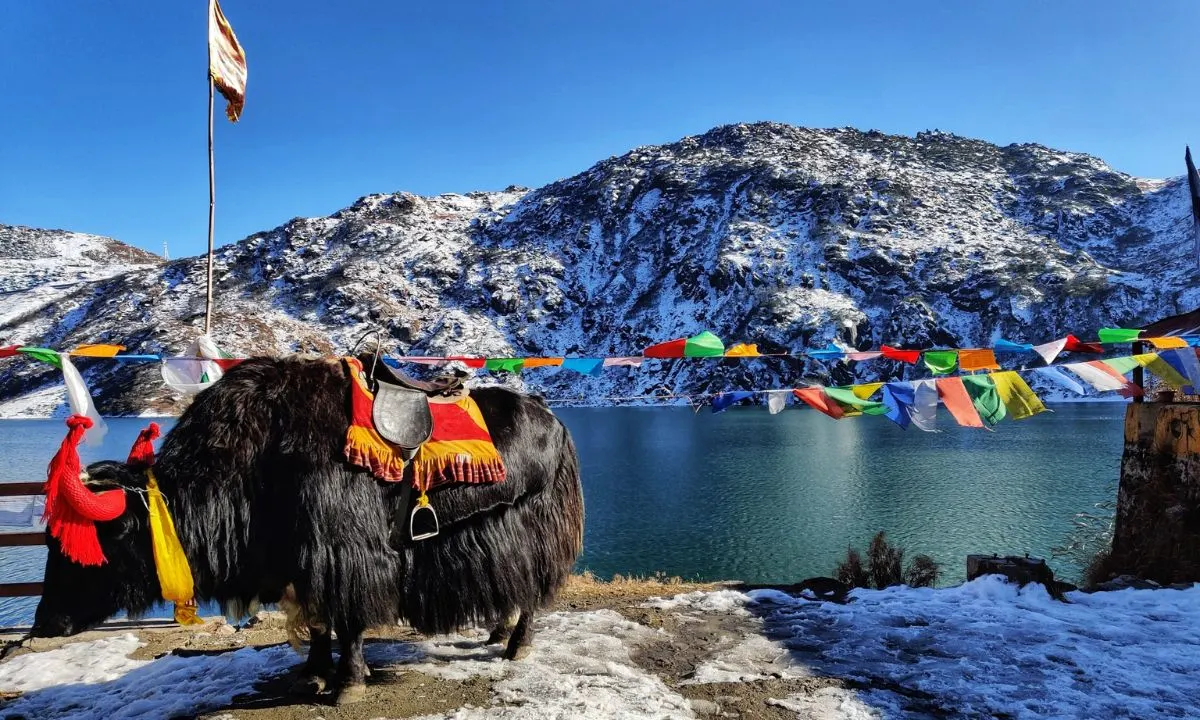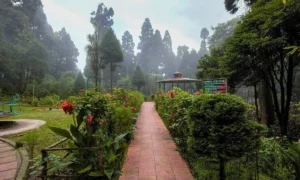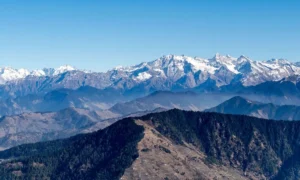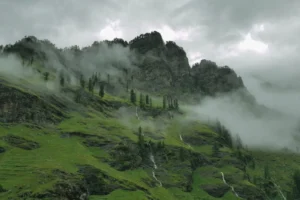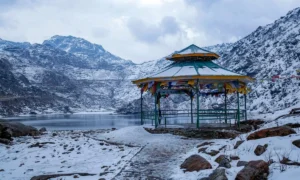Have you ever wondered what it is like to visit a place where clouds float below the mountain peaks and the air is crisp and clean? Perhaps you are curious about what to pack for a trip to the Himalayas or what to do once you arrive. You might even be thinking, “How can I explore Gangtok without spending a fortune?” If so, you are in the right place. This Gangtok Tourist Place is designed to answer all your common questions and help you plan an unforgettable trip to this beautiful capital city of Sikkim.
This guide is here to help you navigate all the amazing things to see and do in this mountain paradise. We will cover the most popular Gangtok tourist places, give you some insider tips, and make sure you feel ready for your adventure. By the end of this article, you will have all the valuable, actionable information you need to plan your perfect Himalayan getaway.
Gangtok is more than just a destination; it is an experience. It is a place where nature’s beauty and spiritual tranquility meet. As you read on, you will learn about the serene monasteries, the vibrant markets, and the spectacular views that make this city so unique. Whether you are an adventurer, a nature lover, or someone looking for a peaceful escape, Gangtok has something for everyone. We will explore the must-see sights and help you discover the hidden gems that make a trip truly unforgettable. So, let us get started on this journey together to uncover the magic of Gangtok.
Best Places to Visit in Gangtok
Gangtok is home to a variety of attractions that appeal to all kinds of travelers. From religious sites to natural wonders, the city and its surroundings offer a rich tapestry of experiences. Here is a breakdown of the top Gangtok attractions.
Within Gangtok City
- MG Marg: This is the heart of Gangtok and a fantastic place to begin your exploration. It is a clean, pedestrian-only street lined with cafes, restaurants, and shops. It is a great spot to relax, enjoy local food like momos, and shop for souvenirs. The atmosphere is vibrant, especially in the evening. [Read More About: MG Marg]
- Rumtek Monastery: Located about 24 km from Gangtok, this is one of the most significant and largest monasteries in Sikkim. It is a peaceful place with beautiful architecture and colorful murals. The sound of monks chanting creates a serene and spiritual environment. [Read More About: Rumtek Monastery]
- Do Drul Chorten Stupa: This large stupa, built in 1945, is a major spiritual landmark. It is surrounded by 108 prayer wheels, which visitors can turn while walking around to gain good karma. The peaceful surroundings make it a perfect spot for quiet reflection.
- Enchey Monastery: This 200-year-old monastery is believed to protect the city from evil spirits. It is a great place to see traditional Tibetan Buddhist art and architecture.
- Tashi View Point: For some of the best sunrise and sunset views, head to Tashi View Point. On a clear day, you can get a spectacular panoramic view of Mount Kanchenjunga and other snow-capped peaks.
Day Trips from Gangtok
- Tsomgo Lake and Baba Mandir: This is perhaps the most famous day trip from Gangtok. Tsomgo Lake, or Changu Lake, is a high-altitude glacial lake situated at 12,400 feet. The oval-shaped lake changes colors with the seasons and is completely frozen during winter. You can enjoy a yak ride or simply take in the beautiful scenery. The journey continues to Baba Harbhajan Singh Mandir, a temple dedicated to an Indian Army soldier who is revered by many.
- Nathu La Pass: Located on the Indo-China border at an altitude of 14,140 feet, Nathu La is one of the highest motorable roads in the world. It is a historic part of the ancient Silk Route. Indian citizens need a special permit to visit this place, and it is closed to tourists on Mondays and Tuesdays. The air is thin, so it is important to acclimatize and take it easy.
Monasteries: Centers of Peace and Spirituality
Sikkim is a land of monasteries, and Gangtok is no exception. These peaceful places are not only significant for religious reasons but also offer incredible architecture and a sense of calm that is hard to find elsewhere.
- Rumtek Monastery: Also known as the Dharma Chakra Centre, this is one of the most significant and largest monasteries in Sikkim. Located about 24 kilometers from Gangtok, it serves as the seat of the Karmapa, the head of the Kagyu lineage of Tibetan Buddhism. The monastery is a stunning example of traditional Tibetan architecture, with a beautiful golden stupa and intricate murals. Visitors can often witness monks performing their daily rituals, creating a truly spiritual atmosphere. A visit here is a peaceful and enlightening experience.
- Enchey Monastery: Situated on a hill above Gangtok, this monastery offers a serene environment and spectacular views of the city. It is believed that the site was blessed by Lama Druptob Karpo, a revered tantric master who flew from Tibet. The monastery is especially famous for its masks and Chaam dances, which are performed during the annual festival in January.
Breathtaking Natural Wonders
The landscape around Gangtok is a sight to behold, with snow-capped peaks, lush valleys, and pristine lakes. These natural spots are among the most famous places to visit in Gangtok.
- Tsomgo Lake (Changu Lake): This stunning glacial lake is one of the most popular day trips from Gangtok. Located at an altitude of over 12,000 feet, the lake is frozen during winter and shimmers with a beautiful blue color in warmer months. The journey to the lake is an adventure in itself, with winding roads and dramatic mountain scenery. Visitors can enjoy yak rides and photography. Please note that a special permit is required to visit Tsomgo Lake due to its proximity to the border.
- Nathula Pass: For the truly adventurous, a visit to Nathula Pass is a must. Situated at a dizzying altitude of 14,140 feet, it connects Sikkim to Tibet. The pass is a symbol of the historic Silk Route and offers incredible views of the Himalayas. Like Tsomgo Lake, a permit is needed, and the pass is often closed during winter due to heavy snowfall. According to the Sikkim Tourism Department, Nathula Pass is one of the most highly sought-after tourist spots, drawing thousands of visitors each year.
- Baba Harbhajan Singh Mandir: On the way to Nathula Pass, you will find this unique temple dedicated to a soldier of the Indian Army who is believed to have a supernatural presence. It is a place of deep respect and reverence for both soldiers and civilians.
Unique City Sights and Activities
Even within Gangtok itself, there are many interesting places to explore that offer a glimpse into the local culture and lifestyle.
- MG Marg: This pedestrian-only street is the heart of Gangtok. It is a clean, bustling hub with a variety of shops, cafes, and restaurants. It is the perfect place for a relaxed evening stroll, to shop for local crafts, or to enjoy some delicious Sikkimese cuisine. The atmosphere here is lively and welcoming. [Read More About: MG Marg]
- Ganesh Tok and Hanuman Tok: These two viewpoints, dedicated to the Hindu gods Ganesh and Hanuman, offer panoramic views of Gangtok and the surrounding mountain ranges. Ganesh Tok is a smaller temple, while Hanuman Tok is a larger complex maintained by the Indian Army. Both provide incredible photo opportunities.
- Namgyal Institute of Tibetology: For those interested in history and culture, this institute is a treasure trove. It houses a large collection of Tibetan artifacts, including statues, thangkas (scroll paintings), and ancient manuscripts. It is a great place to learn about the history and culture of Tibet and Mahayana Buddhism.
- Ropeway (Cable Car): For a different perspective of the city, take a ride on the Gangtok Ropeway. The short ride offers a bird’s-eye view of the city, the valleys, and the majestic peaks of the Himalayas.
Tips for Your Gangtok Trip
- Best Time to Visit: The best time to visit Gangtok is during the spring (March to May) and autumn (September to November) when the weather is pleasant and the views are clear. The monsoon season (June to August) brings heavy rainfall, which can cause travel disruptions.
- Permits: Remember to apply for a Protected Area Permit (PAP) for places like Tsomgo Lake and Nathula Pass. You can obtain this through a registered travel agent or the Tourism Department. It is a good idea to arrange this in advance.
- What to Pack: The weather can be unpredictable. It is wise to pack layers of clothing, including a warm jacket, as the temperatures can drop significantly, especially at higher altitudes.
- Altitude Sickness: Because of the high altitude of places like Nathula and Tsomgo Lake, some people may experience altitude sickness. It is important to stay hydrated, move slowly, and allow your body to adjust.
Planning Your Trip: The Best Time to Visit Gangtok
Choosing the right time to visit Gangtok can make a big difference in your experience. The climate varies greatly with the seasons, and each one offers a unique charm.
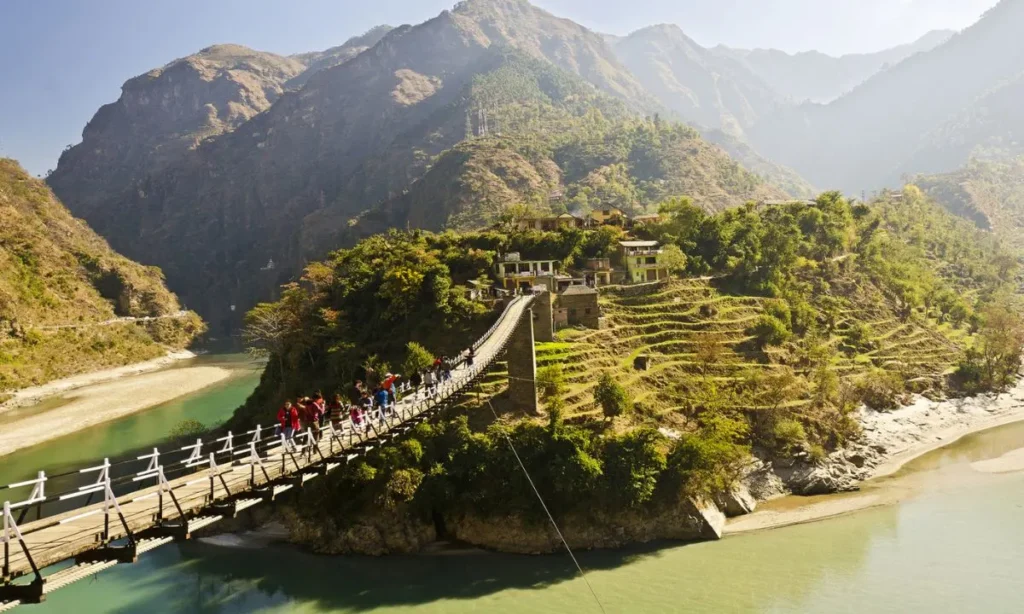
Summer (March to June) Gangtok Tourist Place
This is the most popular time to visit. The weather is pleasant and mild, with temperatures ranging from 15°C to 25°C. The skies are generally clear, offering spectacular views of the Himalayan peaks. It is the perfect season for sightseeing and outdoor activities like paragliding and trekking. This is when the famous International Flower Festival takes place, and the blooming rhododendrons add a burst of color to the landscape.
Monsoon (July to September) Gangtok Tourist Place
While some tourists avoid this season due to heavy rainfall and the possibility of landslides, it is a great time for budget travelers. The rain brings the waterfalls to life, and the landscape is incredibly lush and green. If you do not mind some rain, you can find great deals on hotels and transportation. However, it is essential to be prepared for road closures and delays.
Autumn (October to November) Gangtok Tourist Place
This is another peak season. The rains have cleared, and the sky is a brilliant blue. The weather is cool and comfortable, making it ideal for sightseeing. You get amazing, unobstructed views of the snow-capped mountains. This season is perfect for photography and exploring all the scenic spots.
Winter (December to February) Gangtok Tourist Place
If you wish to see snow, this is the time for you. The temperature drops significantly, often going below freezing. While the city itself may not get much snow, the roads leading to high-altitude places like Tsomgo Lake and Nathu La Pass are often covered in it. It is a magical experience, but be sure to pack warm clothing and check road conditions before you g
How to Reach Gangtok: Your Travel Options
Gangtok is well-connected, but since it is a hill station, the journey involves a beautiful drive.
By Air
The nearest airport is Bagdogra Airport (IXB) in West Bengal, which is about 125 km away. From there, you can hire a private taxi or take a shared jeep. The drive takes approximately 4-5 hours and is incredibly scenic, with the road following the Teesta River for a good portion of the way. Sikkim also has its own airport, Pakyong Airport (PYG), which is much closer, but flight services are limited and can be affected by weather.
By Train
The nearest major railway station is New Jalpaiguri (NJP), also in West Bengal. It is a large station connected to many cities across India. From NJP, you can follow the same options as from the airport—private or shared taxis. Shared jeeps are a very popular and cost-effective way to reach Gangtok.
By Road
Gangtok is connected to nearby cities like Siliguri and Darjeeling by National Highway 10. Sikkim Nationalized Transport (SNT) operates regular bus services, which are a budget-friendly option. A road journey to Gangtok is an experience in itself, with winding roads and stunning views of the Eastern Himalayas.
Practical Tips for a Great Gangtok Trip
| Permits: | A special Protected Area Permit (PAP) is required for Indian citizens to visit places like Tsomgo Lake, Nathu La, and other parts of North Sikkim. Your tour operator or hotel can assist you with this. Foreigners need a Restricted Area Permit (RAP), which can be obtained from designated offices. |
| Pack Accordingly: | Regardless of the season, it is wise to pack some warm clothing, as the weather can change quickly, especially at higher altitudes. A good pair of walking shoes is a must. |
| Stay Hydrated and Acclimatize: | Gangtok is at a higher altitude, so it is important to drink plenty of water and allow your body to adjust for a day or two before heading to even higher elevations like Nathu La. This helps prevent altitude sickness. |
| Getting Around: | Within Gangtok, local taxis are the main mode of transport. Shared taxis are a great way to save money. For sightseeing outside the city, it is best to hire a private car or join a shared tour. Most taxis operate on fixed rates for specific routes, so there is no need to worry about meters. |
FAQs (Frequently Asked Questions)
Q1. What is the best way to reach Gangtok?
The nearest airport is Pakyong Airport, located about 35 kilometers from Gangtok. However, flights can be infrequent. The most common way is to fly to Bagdogra Airport in West Bengal and then take a taxi or shared jeep to Gangtok, which takes approximately 4-5 hours.
Q2. How many days are sufficient for a Gangtok tour?
A typical trip to Gangtok requires at least 4 to 5 days to cover the main attractions comfortably, including a day trip to Tsomgo Lake and Nathula Pass. If you wish to explore more of Sikkim, you should plan for a longer duration.
Q3. Is it safe for a solo female traveler?
Yes, Gangtok is generally considered a very safe destination for solo female travelers. The local people are known for being hospitable and helpful. However, as with any travel, it is always wise to be aware of your surroundings, especially at night.
Q4. What kind of food should I try in Gangtok?
You must try local Sikkimese dishes like momos (dumplings), thukpa (noodle soup), and thenthuk. The local cafes also offer delicious traditional tea and other regional snacks.
Conclusion
Gangtok is a truly captivating destination that offers a perfect mix of stunning natural beauty, spiritual tranquility, and vibrant culture. We have explored the top places to visit in Gangtok, from the peaceful Rumtek Monastery and the breathtaking Tsomgo Lake to the bustling streets of MG Marg. By following the advice in this guide, you are now well-equipped to plan a trip that is not only enjoyable but also safe and well-informed. Remember to take it easy, soak in the magnificent scenery, and respect the local customs and environment. We hope you feel inspired to visit this incredible Himalayan gem.
We would love to hear about your travel experiences in Gangtok, so please feel free to share your stories or ask any further questions in the comments below!
